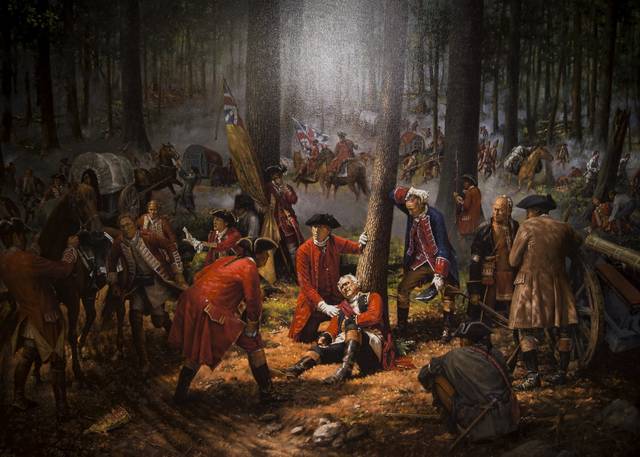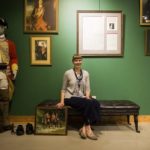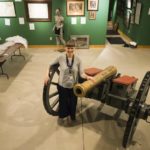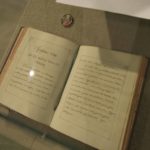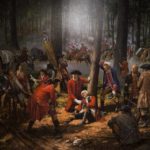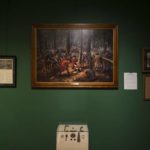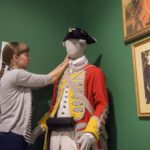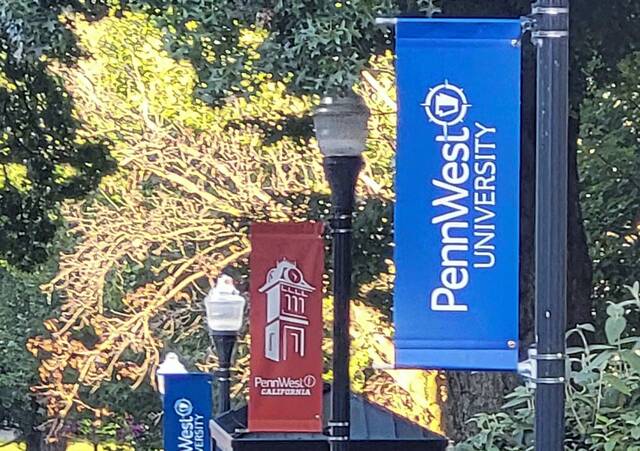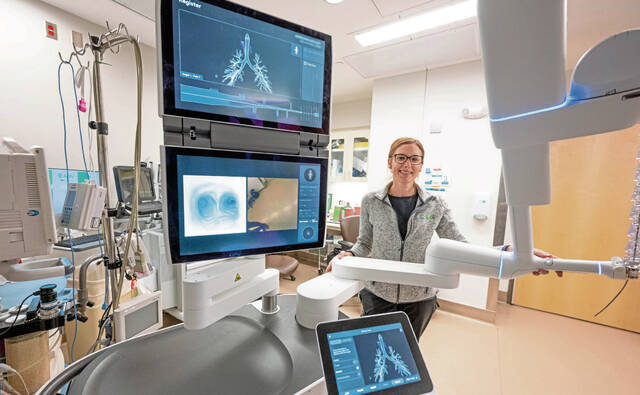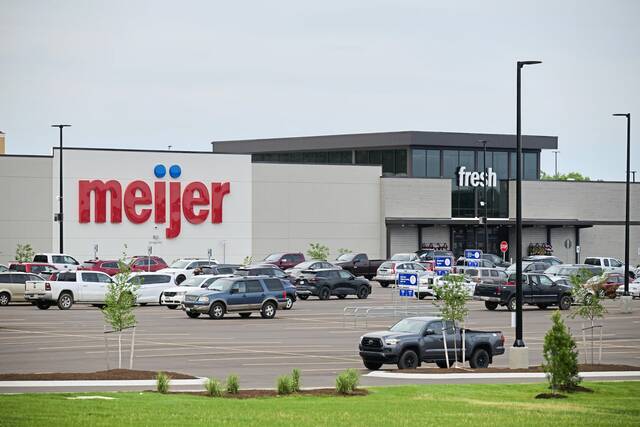The Battle of the Monongahela has become known to many as “Braddock’s Defeat.”
British Gen. Edward Braddock failed in his 1755 campaign to wrest Fort Duquesne — the future site of Pittsburgh — from French forces. He was mortally wounded, and his forces routed in the July 9 battle with the French and their Native American allies on land that is today in the Allegheny County towns of Braddock and North Braddock, along the Monongahela River.
“It was Capt. Beaujeu’s victory if you flip it from another perspective,” notes Erica Nuckles, director of history and collections at Fort Ligonier — a reconstruction of the British outpost that was a staging site for Gen. John Forbes’ eventual successful seizure of Duquesne in 1758.
Capt. Daniel-Hyacinthe-Marie Liénard de Beaujeu, the French military leader, is one of the figures from the Battle of the Monongahela whom visitors may learn about at the Braddock’s Battlefield History Center, which reopened to the public Saturday under the auspices of Fort Ligonier. It is in part of a former car dealership in North Braddock that occupies the site where the battle began more than 260 years earlier.
“In the exhibit text, we’re able to introduce a few of the interesting characters,” said Nuckles, who has led the effort over the past several months to enhance the history center with fresh decor and some new displays.
“The battlefield was a much more diverse place than people might expect,” she said. “There were women who were caught in the battle, and killed. There were free and enslaved black men who were servants for soldiers or wagoners.
“There were many different Native American nations represented.”
Among the latter participants was the son of a formerly enslaved African-American father and an Abenaki mother who was captured by and adopted into the Mohawk nation.
Three mannequins in period garb that populate the revamped history center represent participants in the 1755 battle — a French marine, one of his Native American allies and a soldier in the British Army’s 44th Regiment.
To augment artifacts from the Braddock expedition and battle, Nuckles has overseen installation of a reproduction cannon of that era that was built for Fort Ligonier and recently was loaned to the Museum of the American Revolution for an exhibit on Alexander Hamilton.
“The carriage is built to be displayed inside, rather than out in the fort, so the Braddock’s Battlefield History Center is the perfect place for it,” Nuckles said of the cannon, which is sized to fire 6-pound projectiles. “It gives visitors a sense of how difficult it was to get heavy artillery, supplies and troops from Alexandria, Va., to the Monongahela.”
The center opened in August 2012 as the virtual one-man project of local history buff Robert Messner, with the help of funding from foundations and of the Braddock Carnegie Library, which acted as the center’s fiscal sponsor.
“The more I learned about the battle and its importance in American history, the less I understood why there had not been a federal or state history site at this location telling this important story,” Messner said.
Messner, who has written a book about the battle that is sold at the history center’s gift shop, was particularly impressed by the battle’s importance in the military career of young George Washington, who served as Braddock’s aide-de-camp.
Washington was one of the few British officers who emerged from the battle unscathed by the enemy. “He performed brilliantly, creating a reputation which would eventually lead to his selection as commanding general of the colonial army in the American Revolution,” Messner said.
Since its opening, he said, the Braddock center has welcomed visitors from every state, except Alaska, and from other nations including Russia and China.
Citing advancing age and health problems, Messner said he “wanted to ensure the center would continue to exist in the future. In my judgment, Fort Ligonier was the best possible choice to continue its operation.”
That transition in stewardship took place in December. Nuckles said the intent is for the history center to become an independent, nonprofit entity, but it shares senior staff with Fort Ligonier and some members who serve on both organizations’ boards.
Part-time employees have been hired to man the history center.
“Our first phase was to freshen up the center and get it back open,” Nuckles said. “We have plans to improve the grounds, to create some green space and more parking.”
She also wants to offer educational programs at the center, welcome school groups and expand on marketing, to spread the word of what it has to offer.
Having the center open once more will “remind people of the importance of the battle and breathe new life into the history of the area,” said Vicki Vargo, executive director of the Braddock Carnegie Library, who remains involved as a member of the history center board.
“It’s a win-win for the community and for the history center,” she said of Fort Ligonier’s involvement. “It’s a wonderful fit. It’s exciting.”







